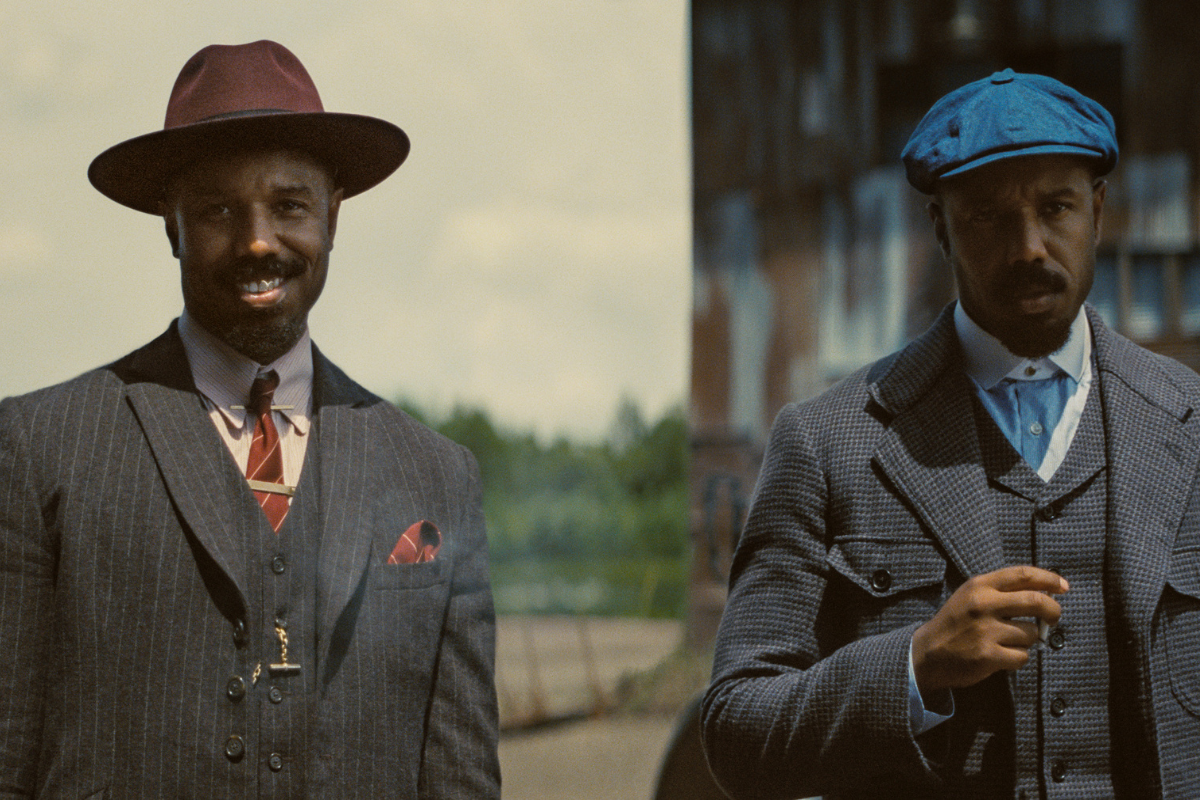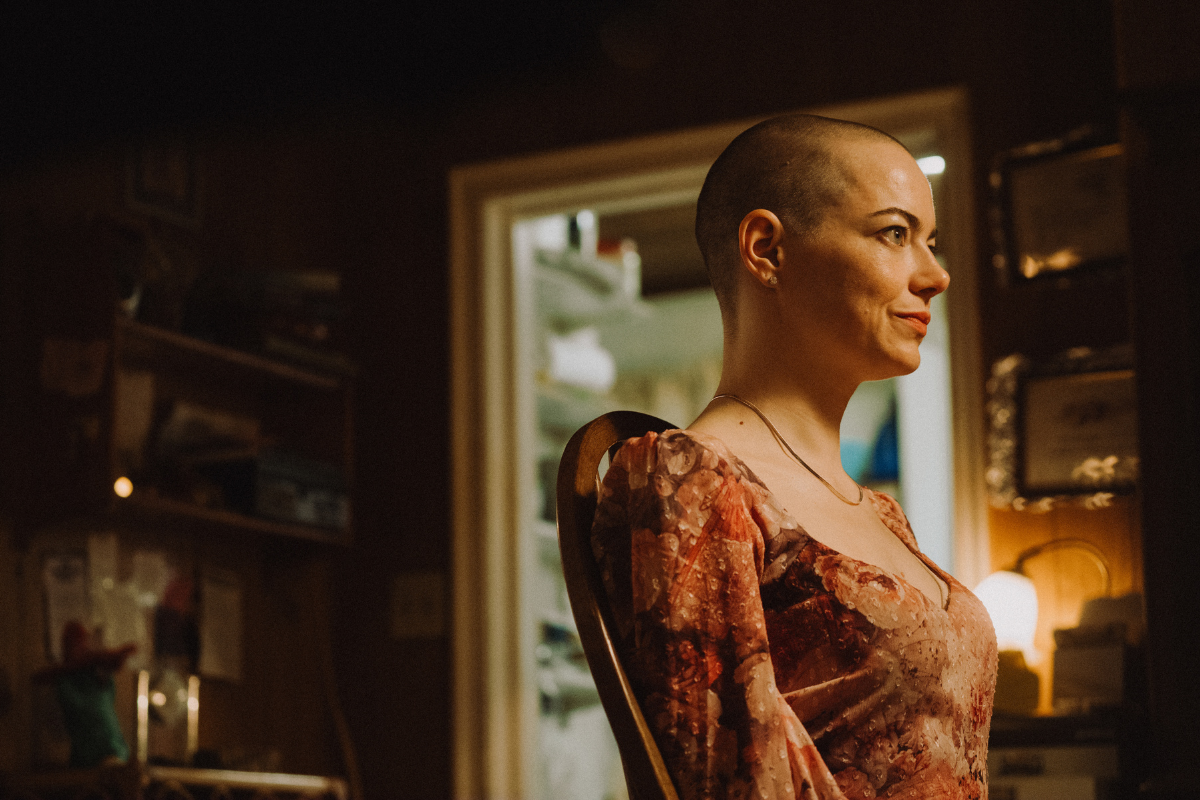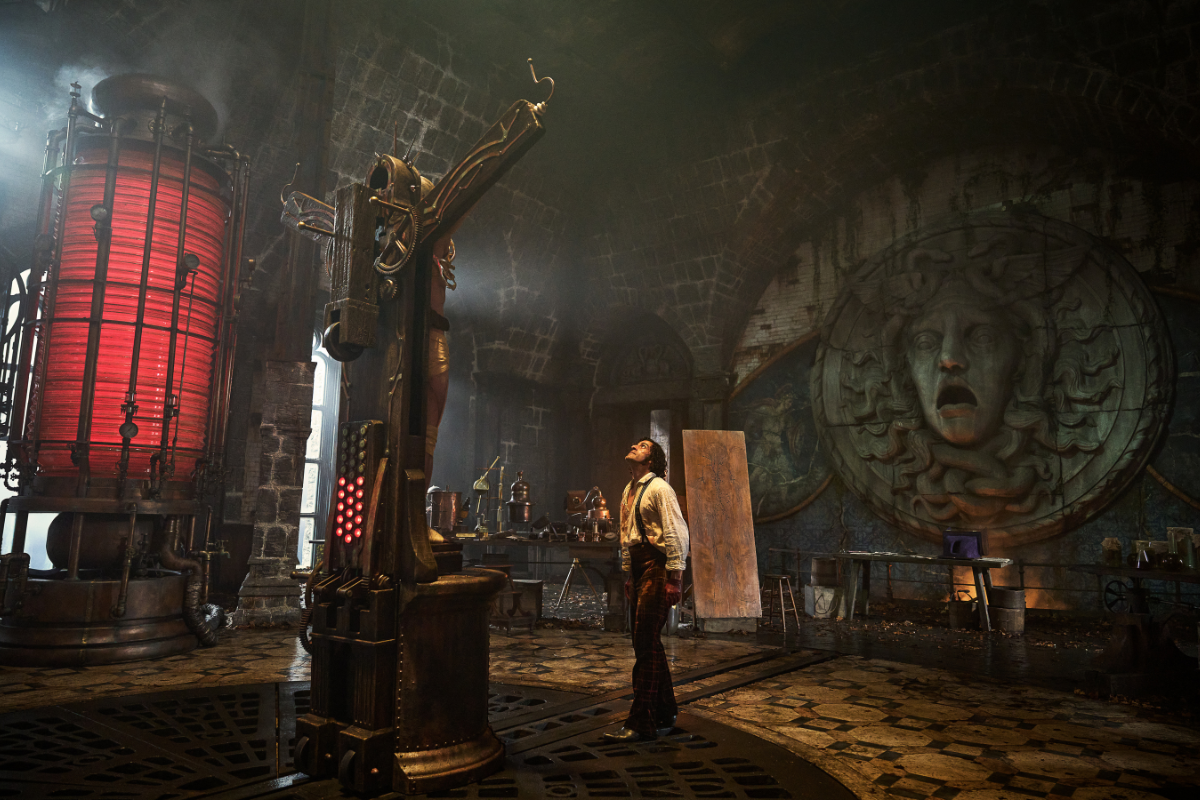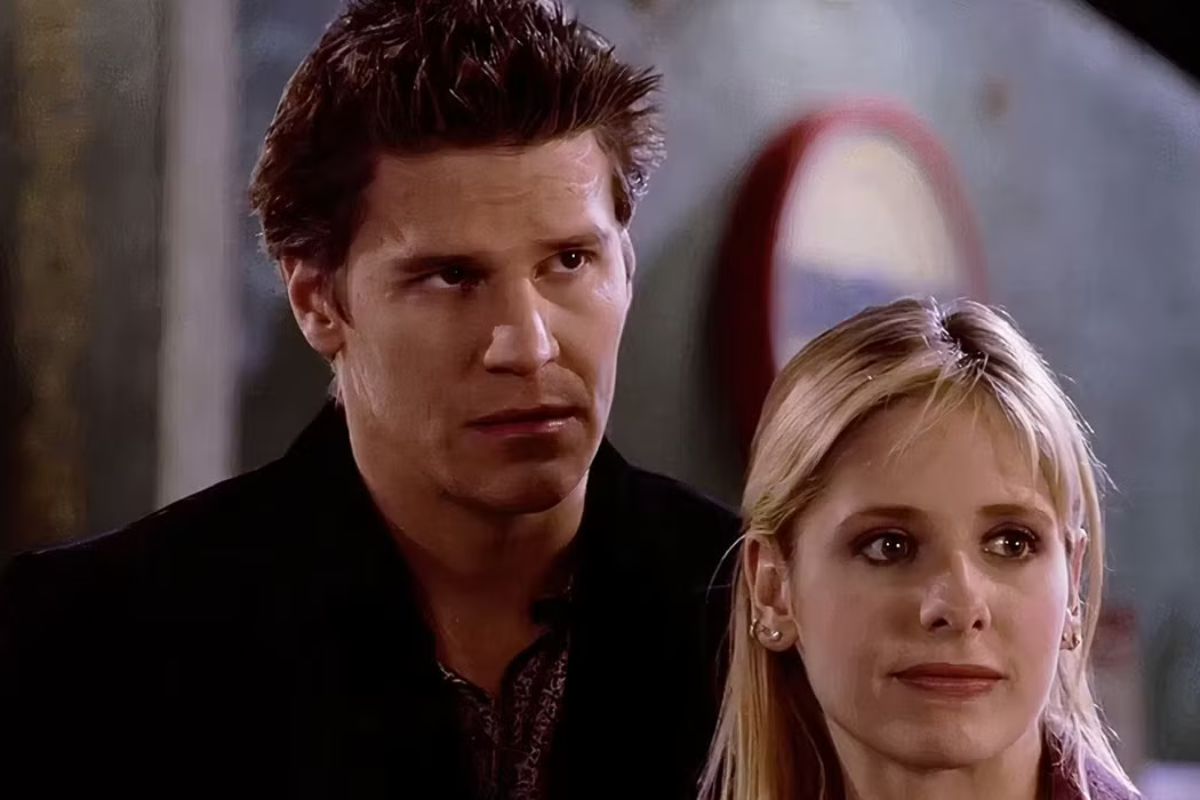Sci-Fi Circuit: The Enneagram of Sci-Fi
As a sci-fi screenwriter, I’m interested in more than just big tent pole movies. I want to write and see sci-fi stories with heart, stories that make me feel, stories…
As a sci-fi screenwriter, I'm interested in more than just big tent pole movies. I want to write and see sci-fi stories with heart, stories that make me feel, stories that reveal character. I've always been a huge fan of Firefly and Serenity for that reason, and Joss Whedon continued to impress me particularly with his character work in The Avengers too, even though it also fit the bill of big summer blockbuster.
I recently connected with my fellow ScriptMag columnist Jeff Lyons around the subject of the Enneagram, which he is an expert at using in writing, and asked him how we might see the Enneagram showing up in sci-fi and how we can use it to improve the impact of our stories. Turns out, the Enneagram can be used for for more than character development -- which is what most writers tend to think it's for -- and even get into story structure with it!
I invited Jeff to talk to us about what the Enneagram is and how it can be used in sci-fi storytelling. Let's see what he has to say.
Thanks for being here, Jeff. First, why don't you start off by explaining a little bit about the Enneagram and what it is, and how you help writers use it to become master storytellers?
The Enneagram is the most powerful system available today that describes the nine-core personality drives underlying all human behavior. Each of the nine drives is rooted in thoughts, feelings, and actions that largely determine how we interact with the world, for good or ill. The Enneagram is not our personality, but it is the crankshaft of our personality; it is the thing that drives us through our personhood and through our lives. Everyone has an Enneagram style, including fictional characters and even stories themselves!
All writers and storytellers face the same problems when developing new work: how do you make characters ring true; how do you develop plots that are believable; how do you seamlessly connect all the pieces of a story so everything makes sense; how do you find the right, true, and natural structure of any story?
Traditionally, writers and storytellers familiar with the Enneagram approached these problems with the only tools they knew: Enneagram typing and breaking down characters within stories by core styles, wings, subtypes, tri-types, etc. This is not new news; Enneagram practitioners that are also writers and/or storytellers have been using it to develop characters for novels, plays, and screenplays for years.
While these conventional approaches may have helped develop multi-dimensional characters, they were never meant to solve the problems associated with developing a story from scratch, or fixing one in desperate need of a rewrite. Writing detailed characters is not the same as developing the full structure of a story from inciting incident through final climax. The reality is that traditional Enneagram approaches cannot stand alone in solving the big story problems faced by storytellers. They must be part of a bigger methodology; one that leverages the power of the Enneagram as well as the power of story structure.
What I teach writers is not just how to write great characters using the Enneagram system, but how to use the Enneagram to reveal the underlying structure of any story -- thus making them masterful storytellers.
I understand that there's a particular Enneagram type that lends itself to each genre. Can you describe for us which type is best suited for the sci-fi genre and how it so naturally lends itself to sci-fi?
There are several configurations that relate to sci-fi:
The pure sci-fi story (with no mixed genre elements) is best represented by the Five Enneagram style. This is the thinker style. Typically, in these stories you have the scientist or “expert” faced with an intractable problem or puzzle that has to be solved, usually through mental powers. This is stereotypically seen most clearly in the old sci-fi “B” movies from the 1950s: the formula of these old movies is pure Enneagram five character development.
Five stories are basically situational or problem-solving focused, rather than deep, complex narratives about human dynamics (there are exceptions). These stories are focused on how to solve the problem of staying alive, or remaining human, and this is achieved primarily through the Five’s intelligence and cool-headedness.
There are some general qualities of sci-fi five protagonists that generally get expressed in most pure sci-fi stories:
- The Five protagonist uses his or her mental prowess to survive an irrational and threatening world.
- The Five protagonist is intelligent, observant, and most importantly unemotional.
- The Five protagonist is brilliant at solving scientific problems.
- The Five protagonist keeps a cool head when others lose theirs (literally).
- The Five protagonist mistrusts emotions and is basically a loner.
- Through his or her brainpower, the Five destroys or controls the irrational force or malevolent power that is threatening the world.
- The Five does not seek leadership, but can be decisive and commanding when forced by circumstances to take over the role.
(These qualities are modified slightly from those developed by Judith Searle, author of The Literary Enneagram.)
The sci-fi/adventure mixed-genre is very common today. This is a combination of Five (the thinker Enneagram sytle) and Seven (to have fun Enneagram style). In this configuration the adventure is seen as adventurous—not a trial by fire or a crucible. The Five-Seven protagonist has a sense of excitement, fun, and adventure. Some examples of this in books and film include: Star Wars, Star Trek, Close Encounters of the Third Kind, Cocoon, and Back to the Future.
The other mixed-genre form of sci-fi that is very popular is the sci-fi/horror story. Horror is another basic Five Enneagram story. So, even though it's mixed genre, the sci-fi/horror mix is more like pure sci-fi, meaning a strong Five protagonist as outlined above.
These days, there are almost no stories that do not combine genres. The most successful stories are those that combine genres for maximum impact. The Enneagram points you to very tight and condensed narrative design that makes story development more accurate and more dramatically compelling.
And you use the Enneagram not only to design your characters, but also to design your plot and structure, correct? Can you tell us a little more about how that would work?
Yes, the Enneagram is an amazing tool for revealing any story’s structure. I've developed a system called Rapid Story Development™ that uses the Enneagram to cross the gap between idea to story. It shows you how to connect plot to character and character to plot. It reveals the main character traits, quirks, and flaws that spawn the perfect opponents, the right supporting characters, and the essential story milestones (inciting incident, midpoint complication, low point, final battle, etc.) necessary to move a story along its right, true, and natural dramatic path. These concerns are not character development issues -- they are structural issues that determine character.
Story structure tells you who your protagonist should be, who the opponent should be, what core relationship needs to exist to drive the middle of your story, and how all these pieces fit together to generate dramatic action.
And the Enneagram is simply the best tool available for identifying these pieces.
How would we see this playing out in a sci-fi story? Can you give us any examples or illustrate it for us in some way?
The Matrix gives a great example of how story structure is informed by the Enneagram (and vice versa).
First, let’s look at the Enneagram elements divorced from any story per se, meaning let’s look at the sci-fi genre as a Five Enneagram protagonist.
5-Thinker Enneagram:
The Five is smart, intellectual and voracious for more information. They are only safe in the world if they can figure out how it works. Once they figure out their environment, then they can control the people around them, because the world would be a wonderful place if it wasn’t for all the stupid people mucking everything up.
At their worst, Fives control their environment by controlling the information. They share their knowledge strategically, only in a way that keeps them safe. They keep people at a distance, hating strong emotion, which they see as needless and wasteful (silly humans). Those damn emotional people! Their greedy desire to keep data close to the vest leads them into paranoia and isolation in their ivory tower. All of this constriction is driven by a core fear they may be wrong or incompetent, so they disintegrate into useless specialization—a pathetic way for them to feel "expert" at something. Their ultimate desire is to be capable and competent—and know it.
The low point of this type is where our character's arc begins.
The Five protagonist's path to change is that they must learn their that they are capable, competent, and wise, and it is their knowledge that finally lifts to the vision that moves them into their Enneagram "integration" point.
They move from their ivory tower of intellectualism to bring their light of knowledge to the world as a visionary, and in their vision they step up and lead. This is the natural growth arc of the Enneagram Five protagonist: moving from being a paranoid, greedy, and fearful jerk into competent, confident, wise visionary that leads others out of the darkness to a new vision of the world.
And this is how it plays out structurally in the actual story:
Neo is isolated and devoid of human contact (silly humans). He lives in his bedroom surrounded by a world he controls through his technology. The world only knows him through his hacker persona. He controls information, and so he controls his environment and the people who might want access to him and what he knows. He is flat emotionally, he clearly does not like emotionality in himself or others. Driven by a fear to be more, to be capable and competent beyond his imagination, his world is turned upside down when smarter people control him with information he doesn’t not have. He is now proven to be wrong and incapable. His worst nightmare is realized. He is now forced to regain his equilibrium, but to do so he must rely on people he doesn’t even know -- another nightmare for a Five Enneagram caught in the downside of their style.
But, what this all leads to is his evolutionary change from paranoid, greedy, fearful jerk to his competent, confident, wise visionary self -- he is THE ONE -- who will lead others out of the darkness to a new vision of a world. Neo’s growth is classic Enneagram integration to the upside of the Five Enneagram, i.e., visionary, self-reliant leader who empowers others, rather than controlling them.
What the above illustrates is how the Enneagram qualities find an amazingly accurate reflection in Neo as the protagonist, in an almost scarily accurate mapping across the abstraction of the pure Enneagram style characteristics to the story beats of The Matrix.
Any other thoughts you'd like to share with us today?
It’s important to understand that writing and storytelling are not the same thing. Storytelling is about story structure. Writing is about language, the use of language, and the romance of the rhythm of words to convey emotion and ideas through rhetoric.
Storytelling and writing use different skill sets and serve different functions. Rarely do both skills exist in the same person. Few writers do both well. And the one most people fall short on is storytelling. Most people are good writers, or at least passable. But, their storytelling skills are almost always lacking.
The Enneagram can help you become a better storyteller, because it can help you learn story structure and can thus shore-up any weakness in story development. If you are like me, you have specific strengths and weaknesses as a writer. One of the weaknesses is undoubtedly story structure and development. I only say this because this what I experience with 90% of the writers I work with (novelists or screenwriters). It’s not a judgment that you are bad and wrong, no—you’re just human. Get over it. Suck it up and do the work needed to strengthen where you are weak. Learn story structure, learn the Enneagram. Both have learning curves and you won’t become masters of them overnight. As with anything, mastering any art takes putting in your ten thousand hours (see Malcolm Gladwell’s book Outliers: The Story of Success). Put in the time, put in the sweat, and put in the tears. You will only excel in the end, and you will succeed.
Thanks, Jeff!
About Jeff Lyons
Jeff Lyons is a working screenwriter and author. He is a regular guest lecturer at Stanford University's Online Writers Studio and at the UCLA Extension Writers Program, as well as a webinar instructor for The Writers Store and Writer's Digest University. He is also a regular contributor to Script Magazine, where he writes his popular column: “Story Talk,” and to Writer’s Digest Magazine, one of the oldest and most widely read writing magazines published in the U.S. Jeff is the founder of Storygeeks, a professional services company offering story consulting, training and editorial services to screenwriters, novelists and nonfiction authors. His film Billy Miske is currently in pre-production in the U.K. through M4West Pictures Ltd. More information can be found on his website, storygeeks.com. Follow @storygeeks on Twitter and “like” Storygeeks on Facebook. In 2013, he will be publishing an e-book entitled Anatomy of a Premise Line: 7 Steps to Foolproof Premise and Story Development.
If you'd like to learn more about Jeff's Rapid Story Development™ method, consider attending his upcoming workshop in Berkeley, California in October. Find out more and register here: www.RapidStoryDevelopment.com.
Related Articles:
- What Makes It Sci-Fi? by Jenna Avery
- Sci-Fi Circuit: Sci-Fi Storytelling, Part 1 — Story Type, Mistakes, & Big Ideas (with Chris Soth) by Jenna Avery
- Sci-Fi Circuit: Sci-Fi Storytelling, Part 2 – Structure, Budget, & What’s Next (with Chris Soth) by Jenna Avery
Tools to Help:
- Write Sci-Fi Film & Television Scripts That Sell (on-demand webinar) with Steve Duncan
- The Writer’s Digest Guide to Science Fiction & Fantasy by Orson Scott Card
- Write Your Science Fiction, Fantasy or Paranormal Novel Collection







